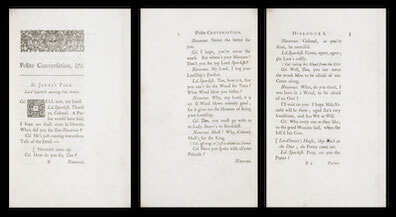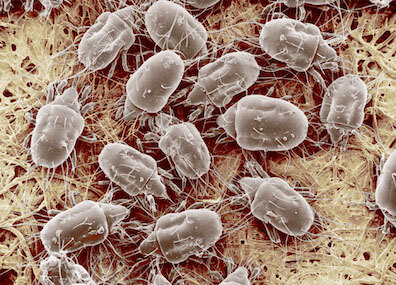Mity cheese
Mity cheese
In Brief
Bloom's meditation on cheese in Lestrygonians—"Cheese digests all but itself. Mity cheese"—combines an unscientific bit of folk wisdom with a valid empirical observation. The second of these thoughts becomes apparent when "Mighty cheese," the text in all versions of Ulysses before Gabler's, is corrected to "Mity," and when one watches films of cheese mites that were being shown in UK theaters in 1903. The resulting pun manages to suggest that cheese does eat even itself, making it the perfectly cannibalistic agent in this chapter of voracious eaters.
Read More
According to Eric Partridge (whose scholarship on the point
is repeated by Thornton, Gifford, and Slote), the saying about
cheese digesting everything stretches back to the 16th
century. Gifford helpfully supplies a rationale: "The process
of making cheese was popularly regarded as a process of
digestion because it involved the use of rennet, a substance
derived from animal stomachs and used to curdle milk." The
precise wording of Bloom's phrase probably derives, as
Thornton first observed, from an 18th century work, Jonathan
Swift's A Complete Collection of genteel and ingenious
Conversation, according to the most polite mode and method
now used at Court, and in the best Companies of England. In
Three Dialogues. Published in 1738 as Polite
Conversation, Swift's dialogues satirically offer to
inform readers about the proper methods of conducting genteel
chatter. In a typically banal exchange of witty pleasantries
in the second dialogue, the eight characters discuss ordering
some cheese with their drinks, prompting Lady Answerall to
report an inconsequential bit of popular wisdom: "They say, cheese
digests everything but itself."
Joyce found in this saying an image of a foodstuff that is
itself a universal eater—mighty cheese! And then he topped it,
by giving Bloom knowledge of the phenomenon of cheese mites:
tiny arachnids that, unless deterred by oil, cloth, or other
coverings, will colonize the rinds of cheeses and sometimes
burrow deep into their flesh. The French cheese Mimolette,
produced around Lille, is one that benefits from the
deliberate practice of such infestation, just as other cheeses
gain their distinctive qualities from resident bacteria and
molds. Its flavor and texture are significantly defined by
mites of the Acarus genus, called cirons or
artisons in French.
The presence of little spider-like creatures in cheese was
much in the public mind at the time represented in Joyce's
novel. A 1903 film of mites moving about a piece of Stilton
cheese was banned in Britain for fear that it might harm
sales. One of the most important figures in prewar British
cinema, the American-born Charles Urban, produced another 1903
film called Cheese Mites that was slightly more
invested in narrative presentation. It showed a well-dressed
Edwardian gentleman using a magnifying glass to read the
newspaper while lunching outdoors. Turning the glass on his
cheese, he is astounded to discover a horde of little bugs
scuttling across its surface.
With his keen interest in the cinema of his day, Joyce could
hardly have failed to notice one film or the other, if only by
references in newspapers. In a personal communication, Vincent
Van Wyk notes that Urban's film aired at the Alhambra music
hall in London in 1903. Wondering whether the film might have
also been shown in Dublin, Van Wyk wrote to the film historian
Luke McKernan, whose search of the British Newspaper Archive
showed that it was exhibited at Kingston Gardens in Dublin on
16 November 1903 "and presumably at other times." McKernan
adds that Joyce undoubtedly watched other films produced by
Urban when he lived in Trieste.
"Mity cheese," which a typist mistakenly altered from
Joyce's manuscript, was his way of referring to these
cinematic revelations, but he must also have intended the word
to refer backward to cheese's supposed ability to "digest"
other foods. Small organisms help cheeses like Mimolette
become what they are by a kind of self-consumption, showing
their phagic powers to be truly mighty. The pun, if it is one,
shows Bloom to be perfectly capable of the kinds of witty
compression of meaning that he admires in Molly's "Bass
barreltone," and that Stephen indulges in all the time, e.g.
when thinking of Moors and Lemaires and pigeons.

